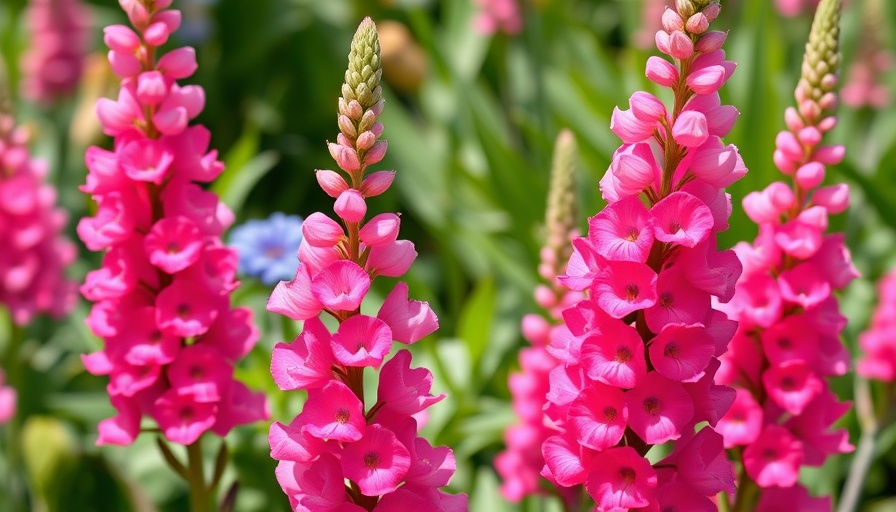
Discovering the Charm of Snapdragons
Snapdragon flowers, scientifically known as Antirrhinum majus, bring a touch of whimsical beauty to gardens across the globe. Originating from Mediterranean Europe, these captivating blooms can be recognized by their unique petal formation, which resembles the open mouth of a dragon. The name itself is a playful nod to their delightful mechanism, where their blossoms gently open and close with a squeeze, making them a favorite for both children and adults alike.
Understanding Snapdragons' Growth Requirements
Snapdragons flourish in the cool temperatures of late spring to early summer. Ideal for USDA Hardiness Zones 7 to 10, they're most robust when temperatures stay below 80°F. For those in regions with warmer climates, hot summers can reduce their vibrancy. Gardeners in cooler areas will appreciate these perennials as they return year after year, while in less temperate climates, they may be appreciated as annuals.
Essential Gardening Tips for Healthier Snapdragons
When planting snapdragons, consider rich, well-draining soil with a pH around 6.2 to 7.0, which is slightly acidic to neutral. Providing full sun exposure will encourage optimal growth. Plant them spaced 6-12 inches apart; this allows their roots to spread and their blooms to shine without competing for nutrients.
Colorful Cultivars to Brighten Your Garden
With around 20 species of snapdragons available, gardeners can enjoy a variety of colors and forms. From the classic tall, upright varieties to the charming dwarf cultivars, snapping up diverse types creates visual interest. Some popular selections include the tall Rocket series, known for their towering height and bold hues, while the compact Twinny series offers vibrant colors in smaller patches.
Maintaining Your Snapdragon Plants
Like any garden plant, regular maintenance is key. Ensure your snapdragons receive moderate watering to prevent waterlogging, which can harm roots. Checking your plants regularly for pests and diseases will help maintain their health; aphids and fungal issues are common challenges. Additionally, deadheading spent blooms promotes new growth and extended flowering periods.
Inspiring Landscaping Ideas with Snapdragons
Snapdragons are not only delightful in flower gardens but also versatile for landscaping projects. Their stunning display can be utilized in garden borders, beautiful pathways, or to brighten up raised garden beds. Combine them with other complementary flowers, such as petunias and marigolds, for a vibrant seasonal display that excites the senses and attracts beneficial pollinators.
Practical Insights: From Planting to Harvest
For optimal timing, seeds can be sown indoors 8-10 weeks before the last frost, allowing for a head start in the growing season. Once seedlings have grown a few inches and the threat of frost has passed, they can be transplanted outside. Utilizing companion planting techniques can also enhance growth, allowing snapdragons to thrive alongside herbs and vegetables.
Engage with Nature Through Indoor Snapdragons
Did you know snapdragons can also be enjoyed indoors? Container gardening allows you to bring these beautiful blooms to your home. Choose pots with good drainage and use quality potting soil. Snapdragons can provide a wonderful aesthetic and pleasant fragrance to any indoor space while reminding you of your gardening adventures.
Conclusion: Start Your Snapdragons Journey
Growing and caring for snapdragon flowers can offer immense joy and satisfaction. With their rich colors and unique charm, these plants not only enhance your gardens but also serve as a connection to nature.
By incorporating these tips into your gardening routine, you’re not just planting a flower—you’re creating an experience that can invigorate your life and beautify your surroundings.
 Add Row
Add Row  Add
Add 




Write A Comment